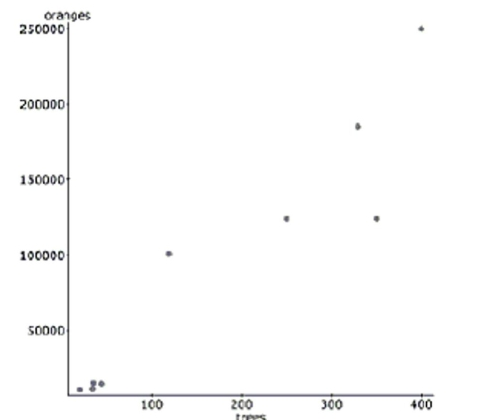A study examined the number of trees in a variety of orange groves and the corresponding number of oranges that each
grove produces in a given harvest year. Linear regression was calculated and the results are below. linear regression results:
Dependent Variable: oranges
Independent Variable: trees
Sample size: 9

-Since
there must be other factors in influencing the number of oranges
harvested. What percentage is that and what is another factor you think might be
involved?
Definitions:
Gestalt Principle
Psychological concepts that describe how humans tend to organize visual elements into groups or unified wholes when perceiving objects.
Proximity
A principle of perception that elements close to each other tend to be perceived as a group.
Similarity
The state or fact of being alike; often used to describe how alike two or more objects, ideas, or concepts are.
Closure
The psychological term for seeking a sense of resolution or completion.
Q3: Suppose the state decides to randomly test
Q17: If the restaurant is open for 8
Q19: It takes a while for new
Q51: Describe an advantage to random assignment of
Q67: A certain population is strongly skewed to
Q92: Which of the following is not required
Q97: The best estimate of the standard deviation
Q112: Which of these has a geometric model?<br>A)
Q234: A coffee house owner knows that
Q534: After conducting a survey at a pet